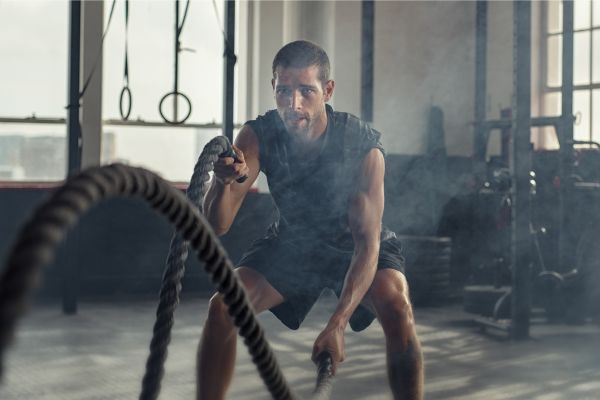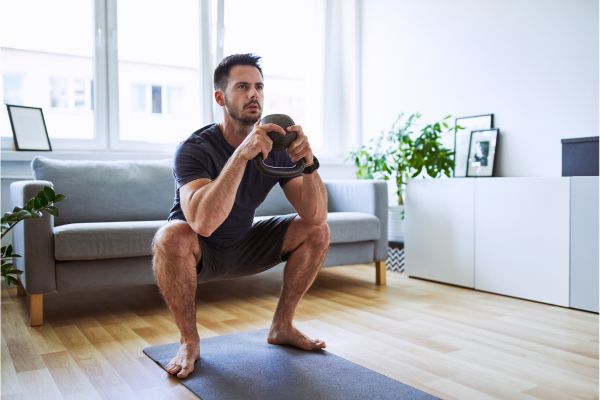Resistance training at home has become a game-changer for fitness enthusiasts looking to build strength without needing a gym membership. With more people embracing home workouts, the demand for effective resistance exercises has skyrocketed. Studies show that resistance training can increase muscle strength by 25–100% over time, depending on consistency and intensity. Whether you’re using bodyweight movements or adding equipment, resistance training at home is one of the best ways to improve overall fitness. Here is all you need to know about this fitness trend:

What Is Resistance Training?
Resistance training, also called strength training, involves exercises that make muscles work against a force, such as weights, bands, or body weight. Unlike traditional cardio workouts, resistance training at home focuses on improving strength, endurance, and muscle tone.
Benefits of Resistance Training
Enhances Muscle Strength and Endurance
Resistance training at home builds muscular endurance and strength by challenging muscles through tension and resistance. Research from the American College of Sports Medicine (ACSM) shows that resistance training improves muscle mass and reduces age-related muscle loss by 30–50% in adults.
Boosts Metabolism and Fat Loss
Unlike cardio, which burns calories primarily during the workout, resistance training at home leads to excess post-exercise oxygen consumption (EPOC)—meaning your body continues to burn calories even after your session ends. Studies indicate that resistance training can increase resting metabolic rate by 5–7%, helping with long-term fat loss.
Improves Bone Density and Reduces Injury Risk
According to the National Osteoporosis Foundation, resistance training at home can improve bone mineral density and reduce the risk of fractures. Weight-bearing exercises such as squats and lunges stimulate bone growth and strengthen connective tissues, lowering the likelihood of injuries.
Supports Mental Health and Cognitive Function
Beyond physical benefits, resistance training at home plays a key role in mental health. A study published in JAMA Psychiatry found that resistance training reduces symptoms of anxiety and depression by 20–30%. It also enhances cognitive function and focus, making it a powerful tool for overall well-being.

Core Resistance Training Exercises
Bodyweight Exercises
Bodyweight exercises are fundamental to resistance training at home, requiring no equipment while effectively building strength and endurance. They improve stability, coordination, and functional movement, making them a great starting point for beginners and a challenge for advanced fitness enthusiasts.
- Squats – Squats strengthen the quadriceps, hamstrings, glutes, and core, making them an essential lower-body workout. They improve balance, enhance mobility, and build strength for everyday movements like standing, walking, and lifting objects. Variations like jump squats and pistol squats increase intensity.
- Push-ups – Push-ups engage the chest, shoulders, triceps, and core, offering a full upper-body workout. They improve muscle endurance and help develop functional strength. Variations like diamond push-ups, wide push-ups, and incline/decline push-ups target different muscle groups for added effectiveness.
- Lunges – Lunges target the quads, hamstrings, glutes, and calves, helping improve lower-body strength and stability. They also enhance balance and coordination, making them beneficial for athletes and fitness enthusiasts alike. Forward, reverse, and lateral lunges provide variety and challenge different muscles.
- Planks – Planks build core strength, endurance, and overall stability by engaging the abs, back, and shoulders. Holding a plank improves posture, reduces back pain, and strengthens muscles essential for daily activities. Side planks and plank variations like shoulder taps add intensity.
Resistance Band Workouts
Resistance bands add controlled tension throughout the movement, activating muscles more effectively than free weights in certain exercises. They are lightweight, portable, and adaptable for various fitness levels, making them a perfect tool for resistance training at home.
- Band Rows – Resistance band rows strengthen the back, shoulders, and biceps, improving posture and upper-body strength. They mimic the motion of rowing machines or dumbbell rows, making them a great alternative for home workouts without needing heavy equipment.
- Banded Squats – Adding a resistance band to squats increases glute and leg activation, enhancing lower-body strength. Bands help maintain proper squat form, preventing knees from caving inward. This is ideal for those looking to improve hip stability and muscle endurance.
- Shoulder Press with Bands – This exercise targets the shoulders, triceps, and upper back, helping improve shoulder stability and strength. It mimics the overhead press with dumbbells but provides continuous tension throughout the movement, reducing strain on joints while maximizing muscle engagement.

Resistance Training at Home Without Equipment
One of the biggest benefits of resistance training at home is that it requires no gym membership or expensive equipment. With bodyweight exercises and household items, you can effectively build strength, endurance, and flexibility.
Full-Body No-Equipment Routine
A well-rounded bodyweight resistance training routine should target all major muscle groups. The following exercises engage multiple muscles while improving endurance and coordination.
- Wall Sits (3 sets of 45 seconds) – Wall sits engage the quads, hamstrings, and glutes by keeping the legs in a static squat position. This exercise builds lower-body endurance, strengthens knee joints, and improves overall muscular stability, making it perfect for endurance athletes.
- Triceps Dips on a Chair (3 sets of 12 reps) – Using a sturdy chair or bench, triceps dips strengthen the triceps, shoulders, and chest. This movement improves upper-body strength and muscle definition while increasing arm endurance. Adjusting the leg position can make it easier or more challenging.
- Step-Ups on Stairs (3 sets of 10 reps per leg) – Step-ups mimic the motion of climbing stairs, targeting the quadriceps, hamstrings, and glutes. This functional exercise enhances lower-body strength, balance, and cardiovascular endurance. Adding a backpack with books increases intensity.
- Isometric Holds (Planks, Squat Holds, or Static Lunges for 30 seconds each) – Isometric exercises improve muscle endurance, core strength, and stability by holding positions under tension. These exercises enhance control, posture, and injury prevention, making them essential for a complete resistance training program.
Creative Household Substitutes for Resistance Training
Household items can act as DIY resistance tools, making it easier to progress without a gym.
- Water Bottles or Milk Jugs – Use as homemade dumbbells for exercises like bicep curls, lateral raises, or overhead presses. Filling bottles with sand or rice increases weight for a more challenging workout.
- Backpack with Books – Wearing a weighted backpack during squats, lunges, or push-ups adds resistance similar to a weighted vest. Adjust the weight by adding or removing books for gradual progression.
- Towels or Sliding Discs – Towels or paper plates on hardwood floors act as sliders for core and lower-body exercises like hamstring curls, sliding mountain climbers, and lateral lunges, increasing resistance and stability requirements.
FAQs
Are resistance training and strength training the same?
Not exactly. Strength training focuses on maximum force production, while resistance training includes all forms of working against resistance, including bodyweight and band exercises.
Is Pilates resistance training?
Yes, Pilates incorporates resistance through controlled body movements, bands, or specialized equipment like the reformer.
Is swimming resistance training?
Yes! Water provides natural resistance, making swimming an effective form of low-impact resistance training.
Which is an example of resistance exercise?
Push-ups, squats, lunges, and band exercises are common examples of resistance training.
What is the 6-12-25 rule?
This is a strength training method where you perform 6 reps of a heavy compound exercise, 12 reps of a moderate exercise, and 25 reps of an isolation exercise to maximize muscle fatigue.
Is it OK to do resistance training every day?
It depends on intensity and muscle recovery. Training the same muscle group daily without rest can lead to overtraining. Ideally, resistance training at home should include 2–4 sessions per week with recovery in between.
The Benefits are Undeniable!
Resistance training at home is an effective and flexible way to build strength, improve endurance, and support mental well-being. Whether using bodyweight exercises or resistance bands, anyone can create a powerful workout routine. With consistency and proper recovery, the benefits of resistance training at home are undeniable.




